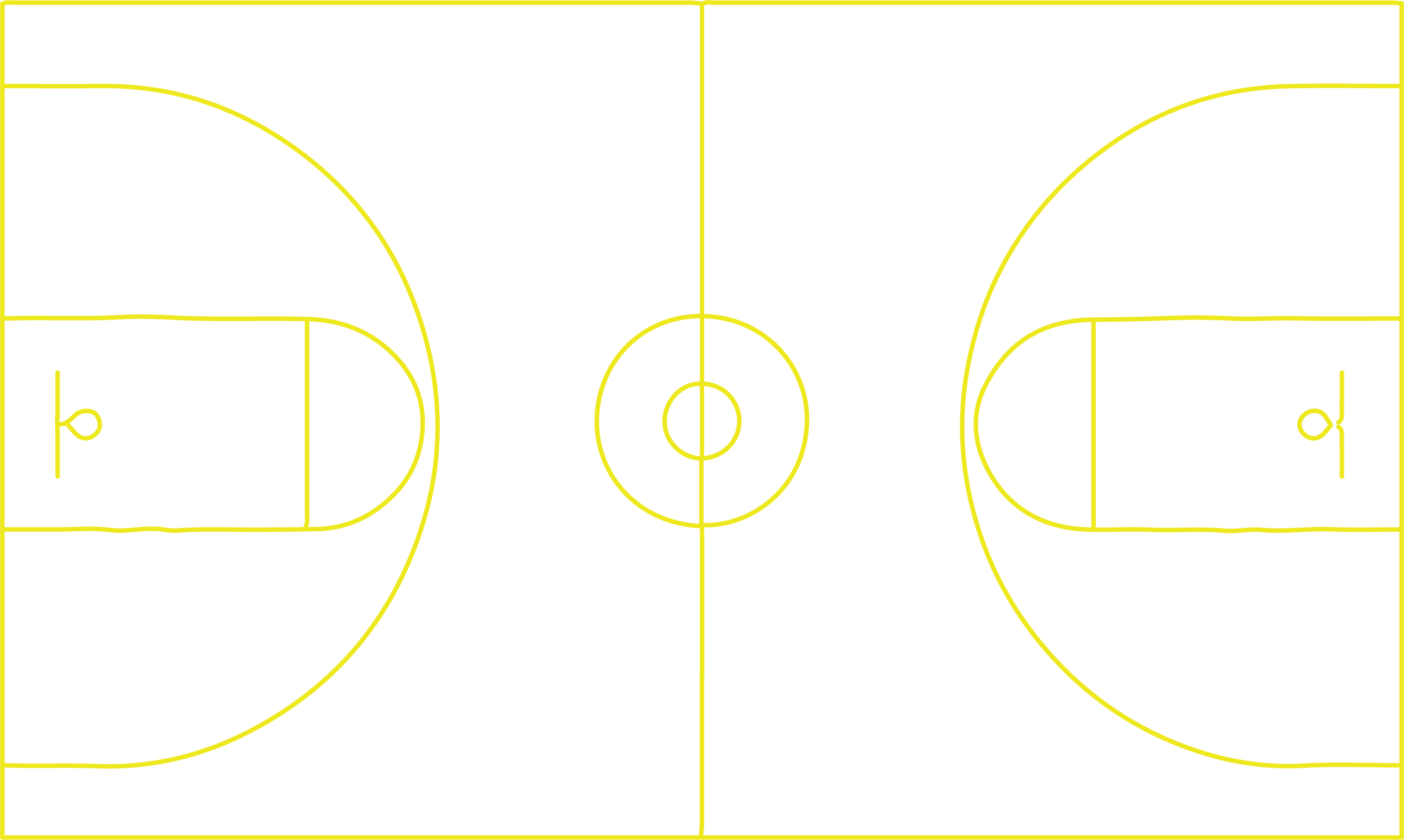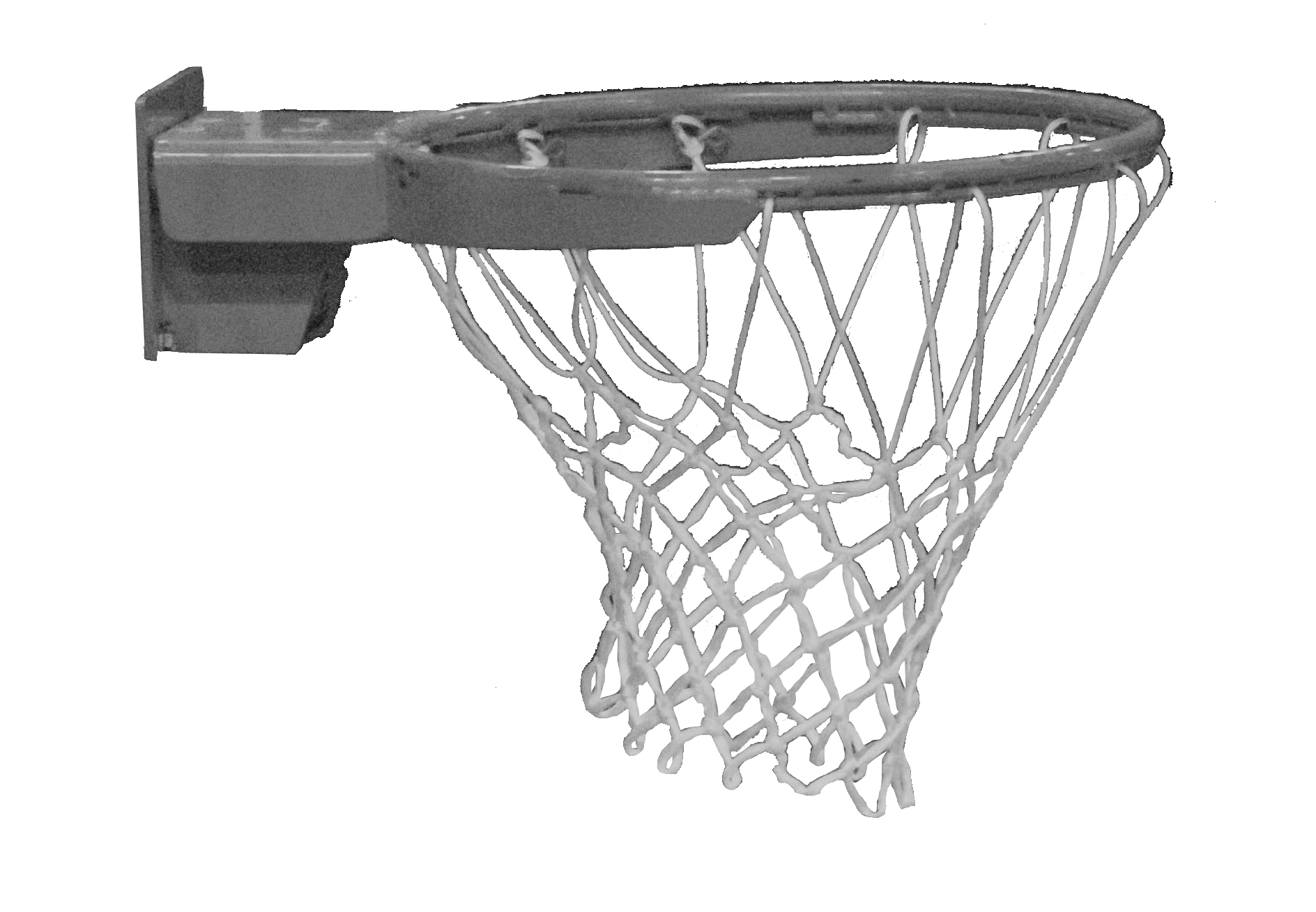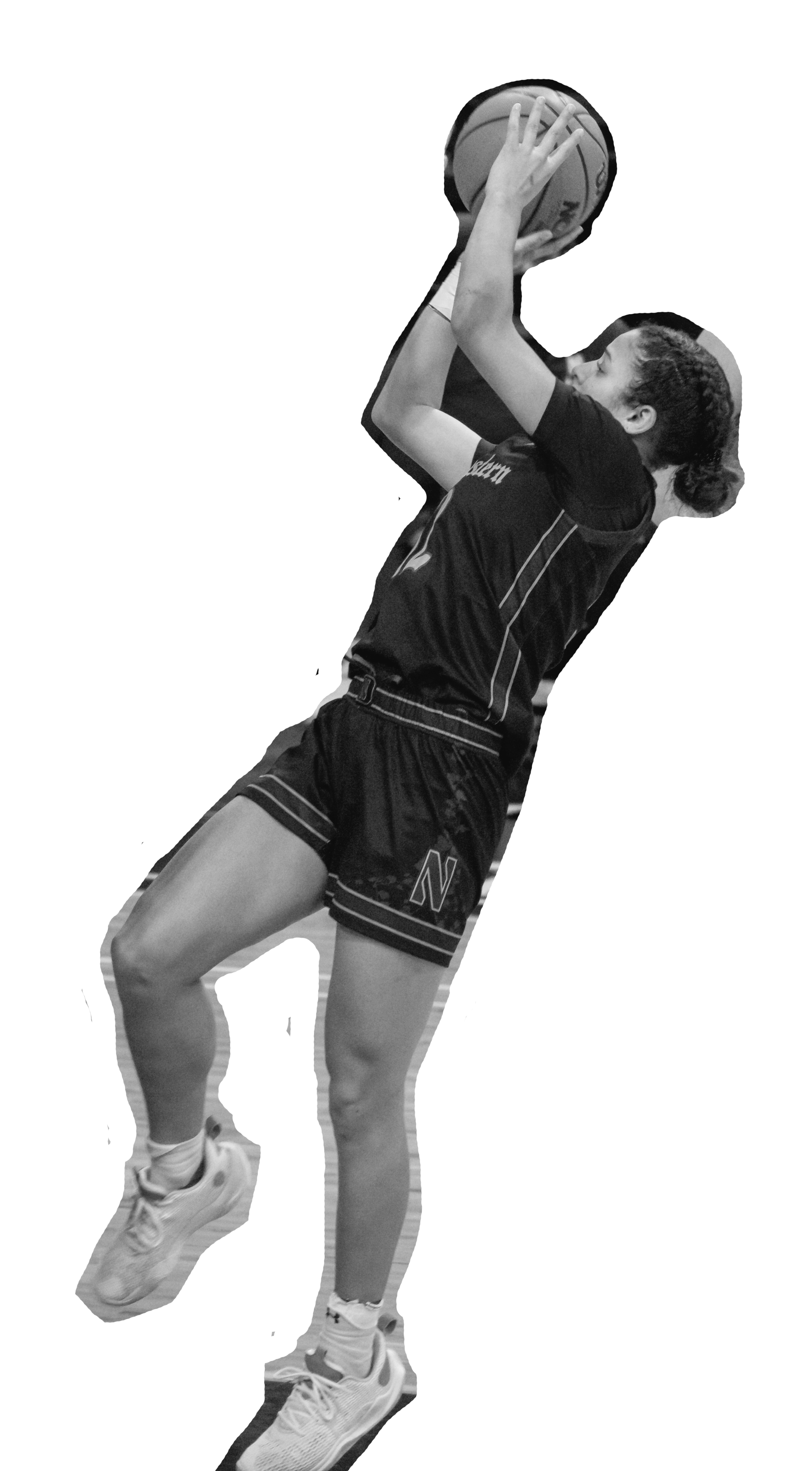When Communication fourth-year Jordan Hamilton and her team walked into the women’s gym at the 2021 National Collegiate Athletic Association (NCAA) Division I basketball tournament, all they found was a “petite” rack of dumbbells weighing up to 25 pounds and a stack of yoga mats. Meanwhile, their male counterparts were given a full-scale gym with rows of pristine weight lifting equipment from wall to wall.
“They said that there wasn’t enough room for a weight room,” Hamilton says. “But you could park about 50 cars in there. It was ridiculous how big it was.”
Hamilton arrived in San Antonio, Texas, excited for her last run at a March Madness victory, but she was shocked and disappointed by the inequality of the weight room, food and merchandise between the men’s and women’s teams.
For food, Hamilton’s team was given pre-packaged meals provided by the hotel, while the male athletes ate buffets. Although Hamilton says the quality of the food improved over time, she was still taken aback by their initial treatment.
“It was like eating dog food,” Hamilton says.
There were also disparities between the quantity and quality of the “swag bags” provided for the male and female athletes. The women received a t-shirt, hat, small towel, two water bottles and a few other small items. The men received all of that and more, including a hoodie and a blanket.
These differences went viral on social media — specifically from the TikTok videos posted by Sedona Prince, center for the Oregon Ducks women’s basketball team. After receiving immense backlash, the NCAA tried to remedy the situation by setting up a new women’s weight room, allowing teams to cater food and giving the women a few more pieces of merchandise. But for some players, the damage was already done.
Hamilton’s teammate Claire says she was thrilled to be at the tournament, but the disparities were disappointing.
“At the end of the day, I don’t think it’s really necessarily about what we got or what we didn’t get or the swag bags, whatever it may be. It’s more about the principle of the thing,” Claire says. “It just felt like, do they really want us here?”
Some female athletes at Northwestern say the inequality in amenities at March Madness this year reveals that the NCAA values their men’s teams more than their women’s teams. The treatment of female athletes on campus has also come under greater scrutiny in recent months. McCormick first-year and basketball player Paige Mott says that although she thinks Northwestern has treated her team equally to the men’s basketball team, she has noticed that men have fewer dress code limitations, whereas women are required to wear their practice jerseys and an extra undershirt.
“I just feel like they’re allowed to do more,” Mott says of the male basketball players.
Weinberg first-year and fencer Emma* expresses similar sentiments to Mott about overall equality in treatment from Northwestern, but notes several differences in the general attitudes of some students and athletic staff.
"At the end of the day, I don’t think it’s really necessarily about what we got or what we didn’t get or the swag bags, whatever it may be. It’s more about the principle of the thing. It just felt like, do they really want us here?"
Claire, Northwestern women's basketball player
“They definitely value their female athletes, but there are certain men’s teams that make all the money for the department,” she says. “When you’re not a money-generating team, you’re less of a priority. You get the same support, but in the end, it doesn’t matter as much to the school.”
According to Emma, there is a different standard for male and female athletes in the weight room. She says it’s enough for men to be focused and working hard, but women need to do all that with a smile and an upbeat attitude.
“There was a point a couple months ago when our strength training coach told us that we needed to have ‘better energy’ in the weight room if we wanted to be taken seriously as a team,” she says. “Even though I’m wearing a mask all the time, I’m constantly asked if I’m okay, if I’m being too quiet or don’t look happy enough.”
Emma also believes that other student-athletes don’t seem to take the female fencers seriously. In one instance, she says a football player called her teammate a “non-athlete.” Even the University’s social media platforms seem to disregard them — specifically the Northwestern sports Instagram account, Emma says.
“For some reason, they hate the fencing team, and I don’t know why. They never post about us,” Emma says. “Fencing is a cool sport. It’s harder to understand than a lot of sports, but they just don’t post about us at all — maybe once or twice a year.”
For example, Weinberg first-year Sky Miller finished second in saber at the 2021 NCAA Fencing Championships, but Emma says her teammate’s accomplishment went largely unrecognized.
“There’s always the underlying attitude from people that men’s sports are more important, not that people would ever admit that,” Emma says. “It’s more internalized misogyny. Male walk-on athletes get much more respect for pursuing their sport here than very high-achieving athletes on lesser-known teams.”
Despite these inequities, Emma says the fencing team’s supportive environment has made her athletic experience at Northwestern mostly positive.
McCormick third-year and lacrosse player Madison Doucette has loved her experience playing for Northwestern so far.
“At Northwestern, especially with the prestige of our program and the overall culture of the athletic department, I [haven’t experienced a ton of inequality there], which is extremely positive,” Doucette says.
However, despite the support she’s received from Northwestern sports, Doucette feels that she cannot speak for all female athletes.
Doucette’s lacrosse teammate, Medill first-year Leah Holmes, felt angry when she heard about the inequality at March Madness.

“It really exposes this darkness and inequality that people can’t ignore anymore,” Holmes says. “When you’re an athlete, I think it hurts more because you know how much work you put in. You know that some of your women’s teams are more successful than your men’s teams, and they still don’t get the proper feedback or hype from universities.”
Holmes started playing lacrosse for Northwestern in the fall of 2020. Despite the restrictions of the COVID-19 pandemic, she says she’s had a positive experience on the team.
“I haven’t experienced any firsthand inequality,” Holmes says. “I think that Northwestern has done a really good job trying to educate both coaches and staff as well as players in treating everyone equally regardless of gender, race [and] sexual orientation.”
When the inequality at March Madness was exposed on social media, the women’s lacrosse coaches spoke to their players about how unacceptable it was.
“Whenever we hear about something that’s discriminatory, it really sends a ripple through all of the women’s teams,” Holmes says. “When that March Madness thing happened, my coach gave us all a talk about how unacceptable it was and how women should be treated just as men should be treated. I think it’s really important that our coaches have been setting aside time to talk to us about the inequalities that have been going on around the country and to let us know that we are important.”
Faculty Fight Back
On May 8, over 200 protestors — many of them Northwestern undergraduates — marched from the Rock to Northwestern President Morton Schapiro’s house carrying signs that declared, “Up with the cheerleaders! Down with purple tie governance!” and chanting in unison.
Female faculty members led the protest in response to Northwestern’s appointment of Mike Polisky, former deputy athletic director for external affairs, to the role of athletic director. Polisky had previously been implicated in multiple lawsuits filed against Northwestern.
Weinberg fourth-year and cheerleader Hayden Richardson filed a sexual harassment lawsuit in December 2020 against Northwestern University and named former head coach Pamela Bonnevier and three Northwestern faculty, including Polisky, for failing to take action when she brought up her concerns. In the lawsuit, Richarson alleges that Polisky specifically accused her of fabricating evidence when she came forward.
Richardson’s initial allegations in the lawsuit include that cheerleaders were forced to wear “skimpy” uniforms at fundraising events and tailgate parties to “titillate” donors. Richardson also alleges that, after bringing concerns to Bonnevier of specific instances of sexual assault and harassment by fans and alumni, she was told to “take it.” Richardson allegedly sought support from the athletic department and Title IX office but was largely ignored. The lawsuit concludes that “Northwestern was willing to silence and sacrifice the well-being of its female athletes in order to keep its donors happy.”
"I think it’s really important that our coaches have been setting aside time to talk to us about the inequalities that have been going on around the country and to let us know that we are important."
First-year lacrosse player Leah Holmes
Instances of alleged racial discrimination were brought to light by Erika Carter, a Black member of the cheer team from 2016 to 2018, when she sued Northwestern. Carter told The Daily Northwestern that Bonnevier forbade her from wearing her hair in braids at games and discouraged her from showing her natural curly hair. Carter also says the racial discrimination goes past Bonnevier to the “higher-ups” in the athletic department, since they claimed to embrace diversity but forced Black cheerleaders to assimilate. The “no-braids” policy was eventually removed, but no apology or statement was issued from the athletic department to the cheerleaders.
While Polisky was part of the investigation and termination of Bonnevier, former cheerleader Antoinette White told The Daily Northwestern that Polisky initally defended Bonnevier and didn’t take the accusations of racial discrimination seriously.
McCormick first-year and cheerleader Sarah says Bonnevier made a comment about her hair when she tried out for the team in May of 2020.
“It was something along the lines of, ‘Oh I noticed your hair is curly. What are you planning to do about that?’” says Sarah, who identifies as mixed race. “The white beauty standard is really present in cheerleading in general. I just figured at a university that’s really progressive like Northwestern that was something they would make sure wouldn’t be in their system.” When Sarah arrived on campus in the fall of 2020, a senior cheerleader gave her a word of caution about Bonnevier.
“Me and another freshman were given warnings against being trusting towards Pam,” she says. “That was the general thing of ‘Be careful. She doesn’t have your best interest in mind.’” Once the lawsuits came out, Sarah learned the full extent of the truth to their advice.
“There’s a lot of instances of sexual harassment and assault and racial discrimination in cheerleading and gymnastics because they’re sports about presentation,” she says. “But I had never heard anything to the extent of a coach willingly being okay with putting people in that position.”
Despite his involvement in both cheerleading allegations, Mike Polisky was named the new athletic director on May 3.
“The administration that had told Hayden, ‘Okay, we’ll compile evidence and we’ll do something about this’ were the same ones that told her she had made everything up,” Sarah says. “I thought that was very disgusting.”
The controversy surrounding Polisky led to backlash from students and faculty over the University’s decision to name him athletic director. In February, more than 80 women faculty signed a letter demanding an apology to the cheer team and increased effort from Northwestern in terms of accountability and transparency in light of the cheerleading allegations.
One of those faculty members was Medill Professor Ava Thompson Greenwell, an African American woman, who says she was especially concerned over the issue of hair. As a former television news reporter, Greenwell says she understands how Black women are forced to suppress who they are when it comes to hair.
“Hair is a very personal thing. It’s a political thing. It’s a cultural thing,” Greenwell says. “When you tell a person they can’t wear their hair in styles that they want to wear, then you’re really disturbing their identity.”
Greenwell says she understands that cheerleaders are supposed to look uniform, but she believes the restrictions went too far.
“This is a game. This is an extracurricular. This is not something that is going to make or break somebody’s career. Why are we requiring them to wear hair in a certain way?” she says. “This was purely cosmetic, and it was purely somebody else’s decision on what’s considered acceptable. The individual should decide how to wear their hair.”
After Polisky’s promotion on May 5, six female faculty members signed an open letter expressing their dismay over the decision. They noted the hypocrisy of the decision compared to statements from Northwestern of becoming a “national leader on diversity, inclusion and equity issues” and other similar sentiments. The Chicago Tribune revealed that the other top three candidates for athletic director were qualified women, including two women of color, heightening faculty and student frustration over the decision to choose a white man. Greenwell was “somewhat surprised” and disheartened when she heard about the decision.
“I can’t believe we had three women candidates and one male candidate, and the male candidate got it,” Greenwell says. “The women had a 75% chance of getting the job, and they still didn’t get it. Those numbers just don’t add up.”
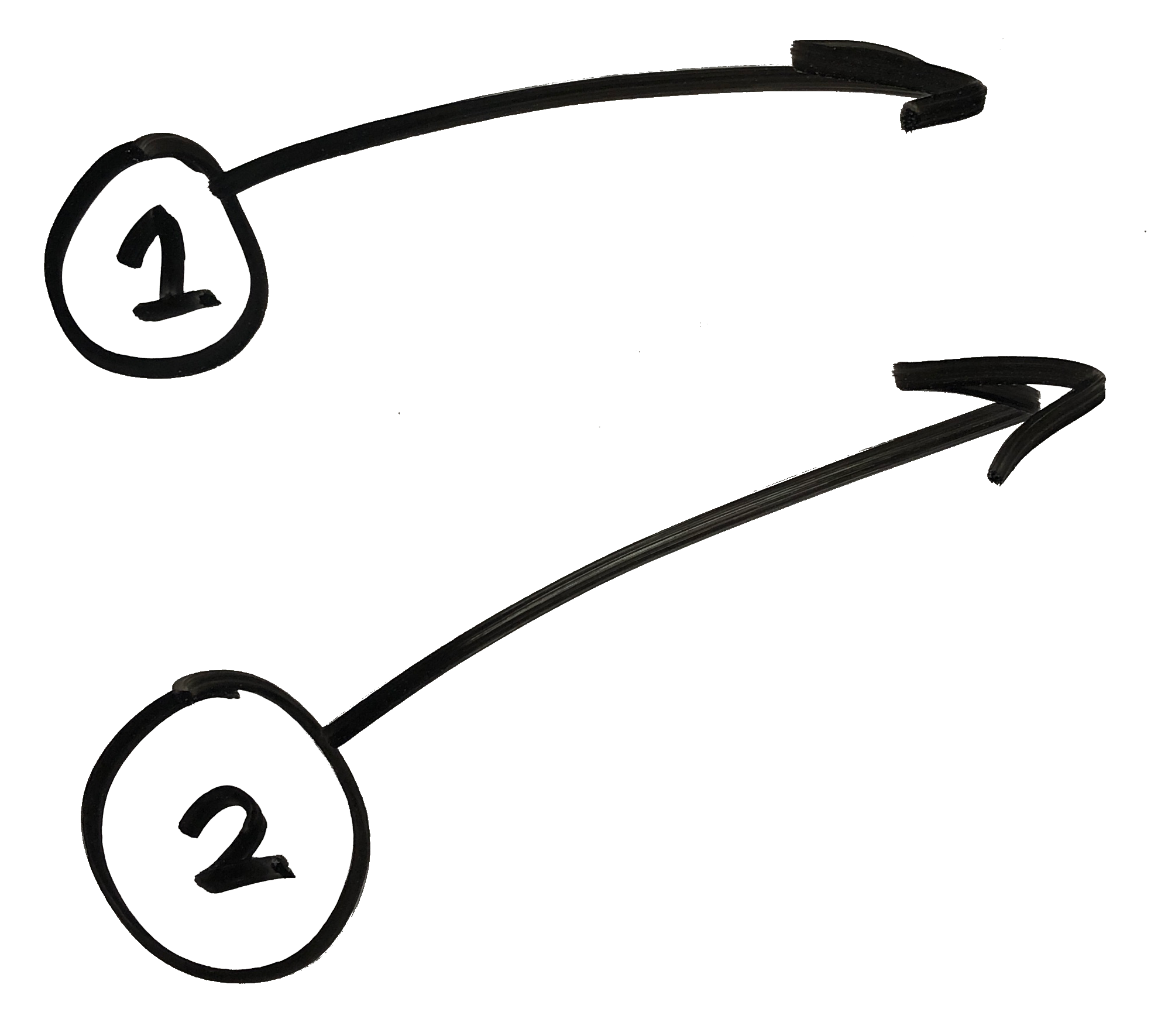
At the faculty protest on May 8, Carter spoke to the crowd, saying Polisky failed Northwestern’s Black and female athletes miserably. As the protesters marched down Sheridan, leaders led call and response chants such as, “What do we want? Transparency! When do we want it? Now!”
“Maybe it turns out [Polisky] did nothing wrong. If that’s the case, then he goes into the pool just like everybody else goes into the pool. But because that finality was not there initially, I think that’s what really unnerved people,” Greenwell says.
On May 12, Polisky released a statement that he is stepping down as athletic director and leaving Northwestern. He wrote, “Over the last 10 days, it has become clear that the current challenges will not allow me to effectively lead our department, especially during these unsettled times in college athletics.” Polisky did not respond to NBN’s multiple email requests for comment.
“My reaction was less about him stepping down and more about the power of students and faculty members coming together and organizing on this issue,” Greenwell says. “It really said that kind of organization can make a difference.”
Financing Women's Sports
In the 2018-19 season, Northwestern’s football team spent about $33 million, according to data from the U.S Department of Education as of May 28. That’s more than the total expenses of all women’s teams combined.
“It’s easy to be jealous of football because they get so much, whether it’s priority or hype or gear or whatever it is,” Holmes says. “You can be jealous of that, but then they also bring in all the money, and they allow our sports to function.”
That same season, football brought in $59 million in revenue. The second highest earning team was men’s basketball with $9 million in revenue, a fraction of football’s gains. Without football and basketball, the revenue generated by all other Northwestern sports is fairly even between the men’s and women’s teams: about $850,000 and $1 million, respectively.
“When I think of men versus women, I don’t see inequality. I only see inequality between football and everyone else,” Holmes says. “And honestly, if that’s gonna happen, that’s okay, because football is always gonna be the sport that draws people to schools and makes the money. It just so happens that it’s a men’s sport.”
While football is ahead in revenue and media attention, it is not Northwestern’s highest performing team. After the fall 2020 season, Northwestern’s football team is ranked 10th in the NCAA with a 7-2 record — their best ranking since 1995 — and a Citrus Bowl victory. Meanwhile, women’s lacrosse is ranked seventh in the NCAA with Big Ten Tournament wins in 2019 and 2021 and a victory in the Big Ten Conference this season. In basketball, Northwestern’s women’s team made it to the second round of March Madness with a close loss to a second-seed team, while the men’s team didn’t make it to the tournament at all.
“It’s disheartening. The NCAA is always gonna love the men more than us,” Mott says. “We get treated like men’s basketball is better.”
Claire says there were more giveaways to draw crowds to the men’s games than to the women’s games.
“Being a woman in sports in general, I feel like you’re always kind of a step below the men,” Claire says.
In the 2018-19 season, the budget for the men’s NCAA Division I basketball tournament was $28 million, about double the women’s budget of $14 million, according to ESPN. That year, the men’s tournament generated about $864.6 million in net income, while the women lost about $2.8 million. While some may criticize the loss of cash, most NCAA tournaments aren’t profitable. In fact, according to the NCAA financial information, only five of their 90 championships generate a profit.
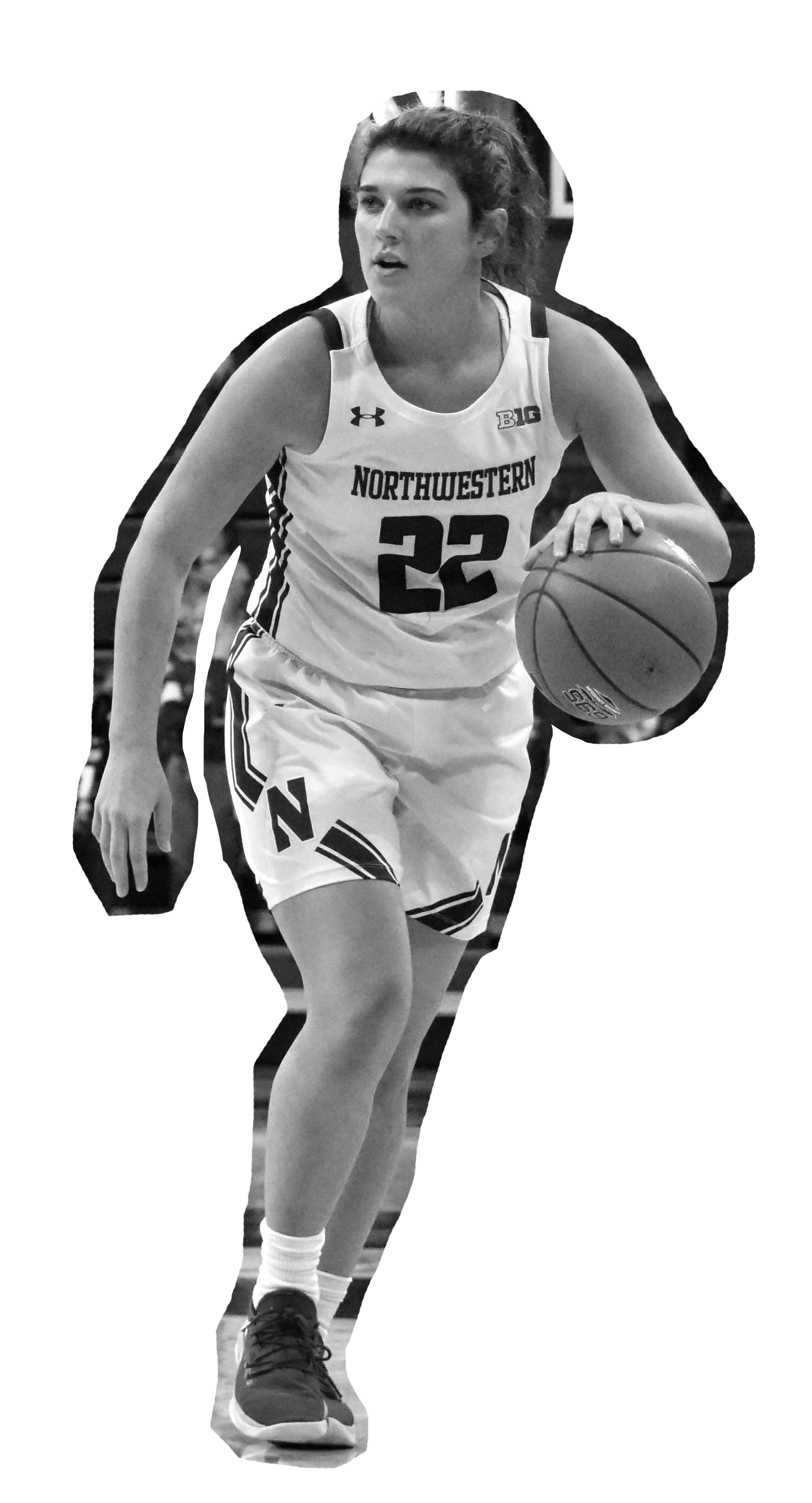
While the men’s NCAA basketball tournament draws more television viewership than the women’s tournament, their ratings decreased this year from the last March Madness in 2019. On the other hand, the women’s games saw an increase in viewership. For the women’s Sweet Sixteen round, overall television ratings were up 67% since 2019.
Communication first-year and basketball player Jasmine McWilliams says she believes the women’s teams are capable of making more money if they are given more exposure.
“If you’re giving women the same platform and you’re giving them the same funding, of course you’re gonna get better results,” McWilliams says.
McWilliams is hopeful that the inequality at March Madness can help change the future for female athletes.
“It’s calling attention to a lot of issues, and I think in the future they’re definitely going to be forced to make changes because so many people are paying attention to it now,” she says. “We’re headed in the right direction, but we have a long way to go.”

